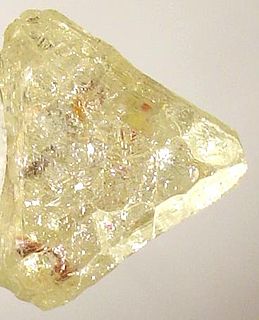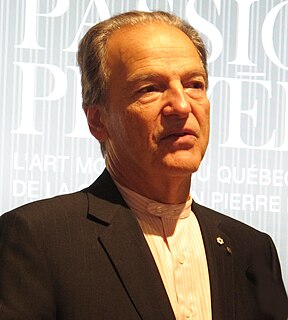Related Research Articles
San Luis Potosí, officially the Free and Sovereign State of San Luis Potosí, is one of the 32 states which compose the Federal Entities of Mexico. It is divided in 58 municipalities and its capital city is San Luis Potosí City.

Tambogrande is a small town in the Piura Province of the Piura Region in northwestern Peru. One of many small towns chosen as a site for mining development during Peru's mining boom in 1999, Tambogrande achieved prominence for successfully opposing the Manhattan Minerals mining development in the area. Compared to other regions, San Lorenzo has some significant advantages over its neighbors, including access to water and its location near the port of Paita. The city's main industry is the production of lemons and mangoes on the fertile land that surrounds the town, producing almost 40% of lemons in Peru and employing 65% of the population in its agricultural industry. Within the region, 70,000 inhabitants occupy it, and 16,000 inhabitants live in the town. Although there is no data that reports the poverty rate in Tambogrande, it is reported that in cities along the rural coastal area of Peru— such as Tambogrande—64% of inhabitants live on less than a dollar a day.
Yanacocha is a gold mine in the Cajamarca region of the Northern Highlands of Peru. Considered to be the fourth largest gold mine in the world, it produced 0.97 million ounces of gold in 2014. The 251-square kilometer open pit mine is situated about 30 kilometers north of Cajamarca, in high pampa, straddling the watershed. The operation is a joint venture between Newmont Goldcorp, Compañia de Minas Buenaventura (43.65%) and the International Finance Corporation (5%).
Goldcorp Inc. was a gold production company headquartered in Vancouver, British Columbia, Canada. The company employed about 15,800 people worldwide, engaged in gold mining and related activities including exploration, extraction, processing and reclamation. Goldcorp’s operating assets included four mines in Canada, two mines in Mexico, and four in Central and South America. As of the third quarter of 2014, Goldcorp was the world's fourth-largest producer of gold. On January 14, 2019, Goldcorp agreed to a merger acquisition by Newmont Mining Corporation, the world’s second-largest producer of gold, with the merged “Newmont Goldcorp” to be the world’s largest producer.
Hudbay Minerals Inc. is a diversified Canadian mining company primarily producing copper concentrate and zinc metal. Much of its history has centered on Flin Flon, Manitoba, where it has mined for over 90 years. Hudbay currently has operations in Manitoba and Peru, and is working towards building a copper mine in southern Arizona. The company also has exploration properties in Canada, Peru, Chile and the United States.
Yamana Gold Inc. is a Canadian company that owns and operates gold, silver and copper mines in Canada, Chile, Brazil and Argentina. Headquartered in Toronto, the company was founded in 1994 and became listed on the Toronto Stock Exchange in 1995, the New York Stock Exchange in 2007, and the London Stock Exchange in 2020. The company became a gold producer after its 2003 re-restructuring in which Peter Marrone took over as chief executive officer and it merged with Brazilian company Santa Elina Mines Corporation. The combined company was able to use Yamana's access to capital with Santa Elina development properties to bring the Chapada mine into production. From there the company combined with other TSX-listed companies RNC Gold, Desert Sun Mining, Viceroy Exploration, Northern Orion Resources, Meridian Gold, Osisko Mining and Extorre Gold Mines which each contributed either a producing mine or a development project that was able to come into commercial production.
Kinross Gold Corporation is a Canadian-based gold and silver mining company founded in 1993 and headquartered in Toronto, Ontario, Canada. Kinross currently operates seven active gold mines, and was ranked fifth of the "10 Top Gold-mining Companies" of 2019 by InvestingNews. The company's mines are located in Brazil, Ghana, Mauritania, Russia and the United States. It trades under the KGC ticker in the New York Stock Exchange, and under K in the Toronto Stock Exchange.

Cerro de San Pedro is a village and seat of the Municipality of Cerro de San Pedro, located in the state of San Luis Potosí in central Mexico. It is located in hills, 5 kilometres (3.1 mi) northeast of the city of San Luis Potosí.

The Mining industry of Ghana accounts for 5% of the country's GDP and minerals make up 37% of total exports, of which gold contributes over 90% of the total mineral exports. Thus, the main focus of Ghana's mining and minerals development industry remains focused on gold. Ghana is Africa's largest gold producer, producing 80.5 t in 2008. Ghana is also a major producer of bauxite, manganese and diamonds. Ghana has 20 large-scale mining companies producing gold, diamonds, bauxite and manganese, and, there are also over 300 registered small scale mining groups and 90 mine support service companies.
Minera San Xavier is a subsidiary of the Canadian company New Gold Inc. that operates a gold and silver mine near Cerro de San Pedro, a municipality of San Luis Potosí just 12 kilometers away from the capital city of the state. The city of San Luis Potosí was founded after gold was discovered in the hills near Cerro de San Pedro in the 15th century.
Coeur Mining, Inc. is a precious metals mining company listed on the New York Stock exchange. It operates five mines located in North America. Coeur employs 2,200 people and in 2012 it was the world's 9th largest silver producer. In 2013 the company changed its name to Coeur Mining, Inc. from Coeur d'Alene Mines and moved its head office to Chicago, Illinois from Coeur d'Alene, Idaho.

The mineral industry provides a major source of economic growth in Peru's national development. In 2019, the country was the 2nd largest world producer of copper and silver, 8th largest world producer of gold, 3rd largest world producer of lead, 2nd largest world producer of zinc, 4th largest world producer of tin, 5th largest world producer of boron and 4th largest world producer of molybdenum.
The mineral-mining industry of Panama accounted for about 1% of the country's GDP in 2006. This does not include any manufacturing of mineral commodities, such as cement or petroleum refinery products.

Mineral industry of Colombia refers to the extraction of valuable minerals or other geological materials in Colombia. Colombia is well-endowed with minerals and energy resources. It has the largest coal reserves in Latin America, and is second to Brazil in hydroelectric potential. Estimates of petroleum reserves in 1995 were 3.1 billion barrels (490,000,000 m3). Colombia also possesses significant amounts of nickel and gold. Other important metals included platinum and silver, which were extracted in much smaller quantities. Colombia also produces copper, small amounts of iron ore, and bauxite. Nonmetallic mined minerals include salt, limestone, sulfur, gypsum, dolomite, barite, feldspar, clay, magnetite, mica, talcum, and marble. Colombia also produces most of the world's emeralds. Despite the variety of minerals available for exploitation, Colombia still had to import substances such as iron, copper, and aluminum to meet its industrial needs.
New Gold Inc. is a Canadian mining company that owns and operates the New Afton gold-silver-copper mine in British Columbia and the Rainy River gold-silver mine in Ontario, Canada. Through a Mexican subsidiary company, they also own the Cerro San Pedro gold-silver mine in San Luis Potosí, Mexico, which ceased operation in 2017. While New Gold was founded in 1980 for the purposes of mineral exploration, the company became a mine operator with its merger of Peak Gold and Metallica Resources in 2008. A fourth company, Western Goldfields, joined in 2009. Together they operated the Peak mine in Australia and Mesquite Mine in California but sold both in 2018. Headquartered in Toronto, shares of the company are traded on the Toronto Stock Exchange and NYSE American.

First Majestic Silver Corp. is a Canadian silver-mining company that operates in Mexico and the United States. It has four producing mines under its control: San Dimas Silver/Gold Mine, Santa Elena Silver/Gold Mine, La Encantada Silver Mine, and Jerritt Canyon Gold Mine. First Majestic also produces and sells its own bullion rounds and bars.
AuRico Gold was an intermediate gold mining and exploration company that, until August 2011, operated only in Mexico. It reached intermediate gold producer status in August 2011 when Northgate Minerals agreed to be taken over for C$1.46 billion. Gammon Gold was an exploration company until 2004 when it started producing for the first time. Assets also include silver and copper.
Canadian mining in Latin America and the Caribbean began in the 20th century. Latin America and the Caribbean's vast resources give the region great geopolitical importance, attracting foreign interest for centuries. From the colonial race of European empires, to the multinationals of today's neoliberal capitalist world, this region continues to draw interest. Canada's involvement in Latin America increased dramatically since 1989 with several landmark negotiations and agreements. By 2009, the Canadian larger-company mineral exploration market in this region was valued at US$1.7 billion. Currently, Latin America and the Caribbean are dominated by Canadian companies falling from a 49% to 32% held control over the larger-company mineral exploration market after the global recession of 2008. The Canadian share of the market is roughly US$59 million more than the amount domestic companies planned to spend in this region. Both Mexico and Chile have the most intense focus of Canadian mining companies; however, their interest and involvement in other Latin American countries is prevalent.

The Ortiz Mountains are a mountain range in northern New Mexico, United States, in Santa Fe County, northeast of the Sandia Mountains and due north of the San Pedro Mountains. The Ortiz include Placer Peak, the highest peak in the range at 8,858 feet, Lone Mountain at 7,310 feet, Cedar Mountain at 7,041 feet, Cerro Chato at 6,965 feet, and the foothills known as the Los Lomas de la Bolsa.

Pierre Lassonde, CM, OQ is a Canadian businessman and philanthropist.
References
- ↑ "Company Profile for Metallica Resources Inc. (MRB)" . Retrieved 2008-10-15.
- ↑ "Archived copy". www.cec.org. Archived from the original on 6 June 2007. Retrieved 14 January 2022.CS1 maint: archived copy as title (link)